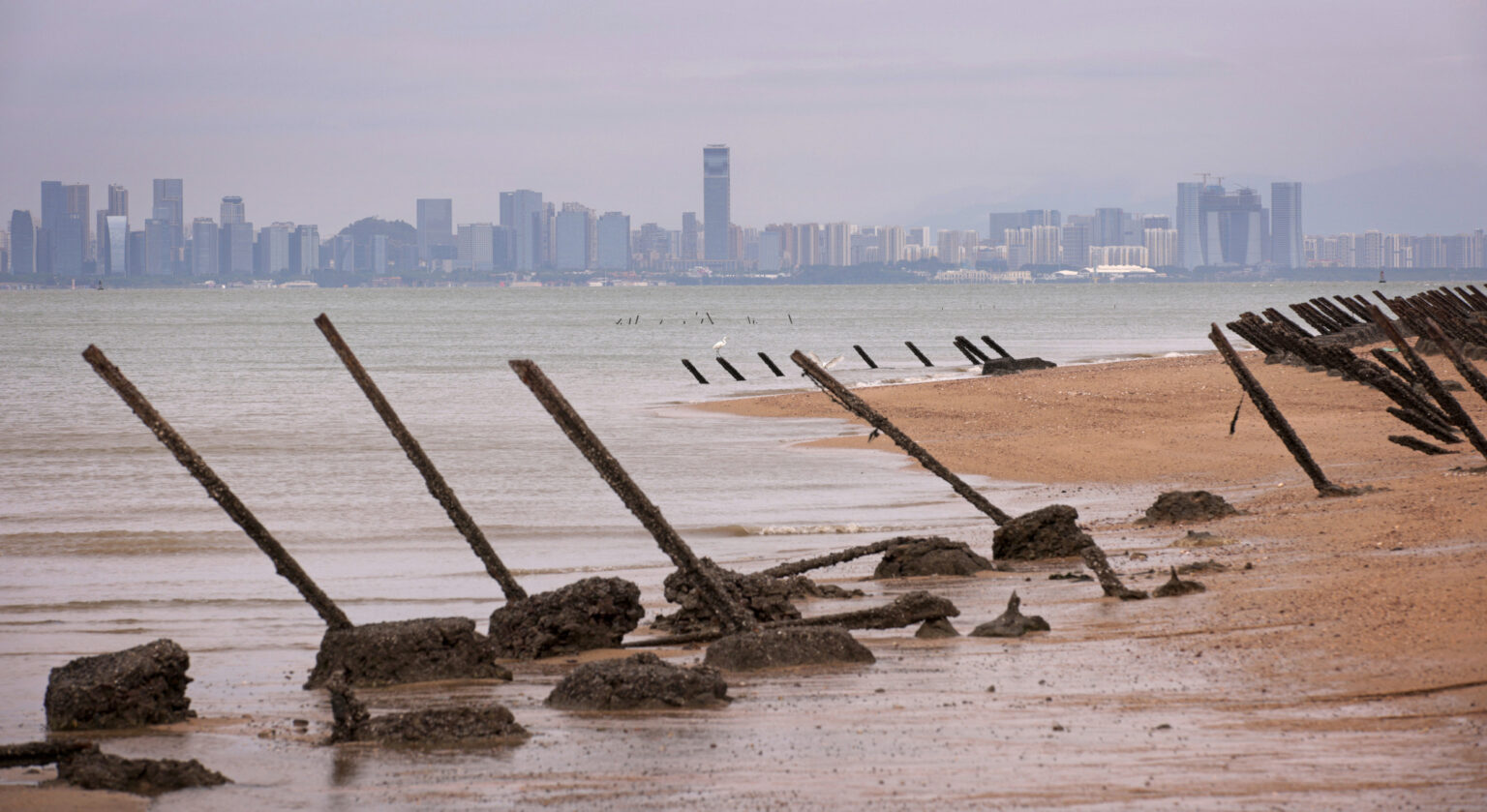China’s construction of barges that appear tailor made for amphibious landings has raised concerns over the prospect of an invasion of Taiwan, with a former U.S. admiral likening the situation to preparations made before the “D-Day” landings in June 1944.
Newsweek reached out to the Chinese Foreign Ministry, U.S. Department of Defense, and Taipei Economic and Cultural Representative Office in Washington, D.C., with emailed requests for comment.
Why It Matters
China has in recent years stepped up pressure on Taiwan, including near-daily incursions into its air defense identification zone and joint military exercises simulating a blockade. China claims the island democracy as its territory and has vowed to bring it into the fold, through force if necessary, though the Chinese Communist Party government in Beijing has never ruled there.
CIA director Billl Burns and other officials have said they believe Chinese President Xi Jinping directed his military to be capable of moving against Taiwan by 2027, acknowledging, however, this does not mean an invasion will take place that or any other year.
What To Know
At least three of the barges have been spotted at southeast China’s Guangzhou Shipyard, Naval News revealed last week, citing multiple sources speaking on condition of anonymity.
The vessels could function as mobile piers, with each featuring a 400-foot road span extending from its bow that enables the swift deployment of tanks and trucks directly to coastal roads on the other side of a beach.
China has already accelerated production of so-called roll-on/roll-off ships, or commercial vessels with built-in ramps that can be requisitioned by the People’s Liberation Army (PLA) to transport and unload military vehicles in a wartime scenario.
According to Ian Easton, a security analyst and associate professor at the U.S. Naval War College’s China Maritime Studies Institute, Taiwan’s rugged terrain offers only a handful of beaches suitable for a Chinese invasion force, with just two months of favorable conditions to mount such an operation across the narrow but often treacherous Taiwan Strait.
What People Are Saying
Adm. James Stavridis, former supreme allied commander Europe, wrote on X (formerly Twitter): “Unfortunate. Reminds me of D-Day preparations by allies in WWII to land at Normandy. This is a key intelligence indicator and worth watching closely.”
John Culver, former national intelligence officer for East Asia wrote on X: “Last week’s revelation of new portable bridge docks is a signal that the next 18-24 months are likely to see some shocking new PLA capabilities.
“The operational challenges for the PLA are daunting. There are specific problems it needs to solve, for invasion or blockade to be viable. The bridge docks, if produced in sufficient numbers, could enable heavy over-beach operations.”
Emma Salisbury, sea power research fellow at the Council on Geostrategy, told Naval News: “As preparation for an invasion, or at least to give China the option as leverage, I would expect to see a build-up of construction of ships that could accomplish this transportation.”
Ely Ratner, assistant secretary of defense for Indo-Pacific security affairs, said in December: “As we look at these operational challenges that the PLA is seeking to resolve, to the extent that their particular goal is to be feeling ready and confident that they can execute a short, sharp invasion of Taiwan at acceptable costs, they’re not there today.
“They’re trying to get there[…] But it’s not clear they’re getting any closer than they were over the last couple of years.”
What’s Next?
A Chinese amphibious invasion would be fiercely contested, as Taiwan has been preparing for such a contingency by stockpiling weapons, both purchased from the United States and indigenously developed.
However, Taipei is still waiting on a backlog of some $20 billion in arms sales approved by Congress, according to estimates by the Cato Institute think tank.
The U.S. is Taiwan’s top weapons supplier but has for decades carefully maintained a policy of “strategic ambiguity,” keeping China guessing about whether it would step in directly if Taiwan were attacked.
Read the full article here


